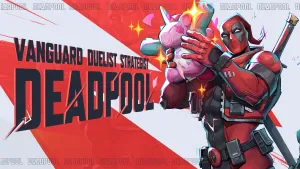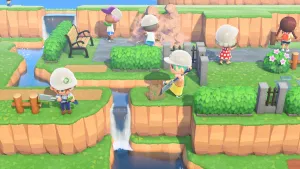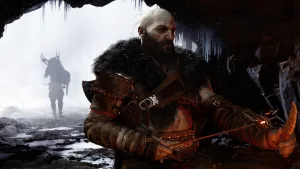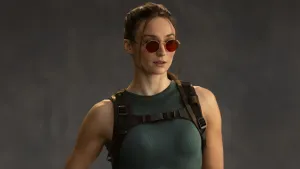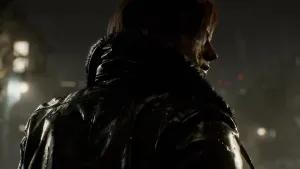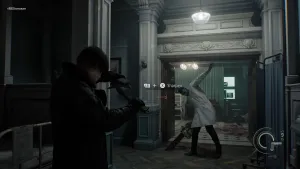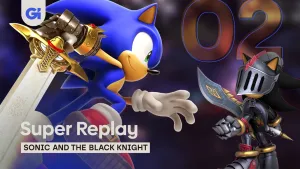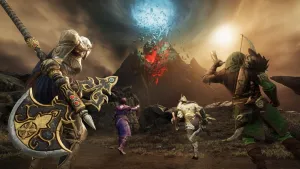Subscribe today to receive the next issue of Game Informer, featuring the Most Anticipated Games of 2026!
An In-Depth Q&A With Marty O'Donnell
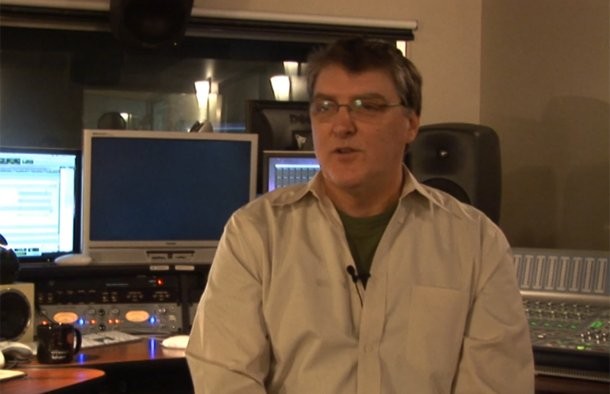
As audio director and composer at Bungie, Marty O’Donnell has crafted some of the most memorable music and sound effects in gaming. We talked with him about the new soundtrack for Halo: Reach, recruiting celebrities for voice work, and squashing every ice cream truck bell.
Can you go into detail on the creation of the theme from the Halo: Reach trailer that debuted on the 2009 Video Game Awards?
It’s hard for me to anticipate what’s going to be the main theme for Reach. Certainly the trailer we just released has a really important theme in it. My approach was I knew I wanted something that was more visceral. I hate using the term “darker and grittier” because it’s so overused, but I wanted something that just really gave you both the feeling of something that’s hitting you in the gut and “this is really an important thing” and also there’s this sense of mission but tragedy that’s about to happen.
I’ve had different sort of instruments stand out over the years in different Halo games. There’s something so timeless about strings and French horns and I love low strings and percussion, so I don't want to walk away from that. But at this point I haven’t chosen some exotic instrument that’s going to be the lead instrument for the game. I’m not sure if I’m going to do that. It’s a character driven game. I still think my approach will be to have themes that score the events and emotions of the game at the time, and not necessarily the Peter and the Wolf approach where this is this guy’s theme and this is this other person’s theme. It’s going to be more, “This is what’s happening to this group of people. This is what’s happening to you while you’re playing.”
(Watch our video of Marty in action here)
At what point in a Halo game's development cycle do you start to write the music?
It’s interesting, I got really involved early with Halo because, at the very beginning in like 1998 when they were first working on it, I would go over there and work on sound design and see what the concept was for the Spartan and what the concept was for the Warthog and I had a build and I was playing with the guys. So it was always really good for me to be in really early playing the game even at its earliest stages. And that’s the way it’s been since I’ve worked with Bungie and then when I came on full time with Bungie it was even more so.
I’m there when we’re talking about story ideas, and when we’re talking about characters -- of course when we cast the characters. So I’m always there at the beginning. I don’t really start working on musical ideas until something is needed. Like, for example, the first Halo piece was done in 1999 because Steve Jobs was going to present it to the world and we had this great opportunity to show some in-game realtime playing. We had no sound engine at the time for it and we just needed some music to just really carry that thing through. That’s where the music came from for the very first piece. And I think it’s sort of been that way ever since.
The original Halo trailer including the first ever piece of music written for the series.
I have some ideas about what direction we want to go in, but until there’s a specific piece that we’re going to show the world I don’t have much specific music. It’s always a really great jumping off point to have something to show to the world with some new music in it. Hopefully then I can cull ideas from whatever I did for that can be developed for the rest of the game.
Can you talk about the recording process and your preference for local artists?
From the beginning I always liked to get local musicians, so when I was in Chicago I had a whole group of musicians that I worked with on commercials and movies. When we moved to Seattle, I just had to find out who in the Seattle area did the same kind of thing and we have this really great group of musicians -- the Seattle Symphony, the Vancouver Symphony people – and it’s called the Northwest Sinfonia and they do film scores and tons of game scores. And it’s just a really great outfit. I basically just give them a call and say “OK, I’ve got a gig for ya. I need 20 strings or 40 strings, and French horns, and woodwinds, and choir.” They all show up at studio X in Seattle, and as long as I have music for them to play then we’re in good shape.
Are there any big Halo fans in the orchestra?
It’s funny. Over the years we’ve actually gotten more and more Halo fans from the musicians. They realize they played on a Halo score and then they find out later on whether from their kids or brothers or sisters or uncles or somebody that “Hey, this game is popular.” And they’re like “You know, I think I played on that.” So in subsequent sessions with these musicians I’ll find out that they’re excited that they’re playing another Halo game, and they ask me about it. We have to make them sign non-disclosure agreements and they’re not allowed to talk about it and all that kind of stuff, but a lot of the musicians and singers are fans of Halo now. Which is fun.
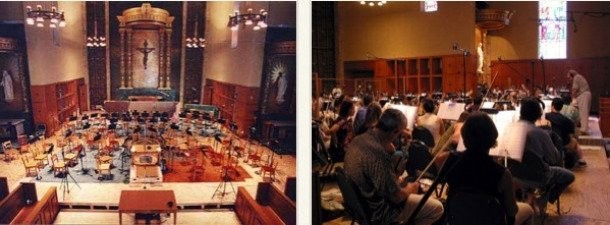
The Northwest Sinfonia
You also handle all of the dialogue recording and sound effects. What’s that process like?
My position at Bungie is audio director and composer, which means that anything that comes out of the speakers I’m responsible for. That doesn’t mean I have to do it all. I certainly have gotten a really good crew of people: Jay Weinland and C Paul Johnson and other people who’ve come on temporarily to help us finish games that are audio experts. But what I really like to do is make sure that the voice acting is as good as possible. My father was a film director and I grew up watching him direct and it’s a lot of fun for me to direct actors. So I will work with the writers either here or if we have outside writers I’ll work with them.
The implementation of how audio works in the game is at least 50% to 60% of what I think makes Halo audio good. Because you can have really great content, but if it’s implemented in a way that’s annoying then you’ve failed. I always want to make sure that we come up with the best way to play combat dialog -- and the best way to have mission dialog not seem repetitive and uninteresting.
For Halo: Reach, all of the sound effects are getting redone and beefed up. How has that process been?
That’s been a lot of fun. Because it’s still the Halo universe, we would like to make sure that the player whose favorite sound is the sniper rifle or the shotgun or the way the plasma grenades sound when they go off, you never want to get too far away from something that people have grown accustomed to and are really fond of. But we never want to just reuse the same sounds we did before, so we’ll start with some sounds that were successful in the first few Halo games. Then we’re always like “OK, how can we make that better? How can we make the explosions sound really great in a surround sound environment? How can we beef them up and fix the mix so it sounds even more awesome?” We’re just always throwing more stuff at it. The sounds in this game I think are going to be the best we’ve ever done because every new game should be the best we’ve ever done.
We heard some “robot” voices in the demo of Reach. How important is it to get voice work in early?
Well, there’s a rule here at Bungie in the audio department that if any robot voice, which is a temporary placeholder voice just so the designers can continue to change their mission dialog throughout the development process. But if any of those ever show up in the game, I don’t get fired. C Paul and Jay get fired. [laughs] So that’s how that works.
But it actually is kind of difficult because we have tens of thousands of voice files. Just managing all of that data is a big task. Sometimes things get shipped that we didn't intend to have shipped or heard by the public. We actually have one little, we call it an ice cream bell, it sounds like a little ice cream bell truck coming by. And that is just to indicate to us whenever we hear the bells it means there’s a material in the game that has not been assigned a proper material type. So you can be walking along and suddenly you’re walking and all you hear are these jingle bells happening.
We’ve actually shipped that sound in every game. At the very last minute we turn it down to zero because when we’re testing the game we just can’t find everything that isn’t working right. But we’ll still hear the bells every once in awhile. So as we get down to supposedly zero bugs there’s always just a couple of things that are causing bells to ring and as long as we just turn them off we’re fine. But if you open up all of our files you’ll find the jingle bell sound in there someplace.

Several of the cast members of Firefly appear in Halo 3: ODST including Adam Baldwin (as Dutch, far left), Alan Tudyk (as Mickey, third from left), and Nathan Fillion (as Buck, in suspenders).
Celebrities have appeared in Halo games here and there. Do you reach out to these people or are some of them huge Halo fans that want to be involved?
We’ve had just a ton of people who are not just good voice actors, but they also play games and they play Halo so they wanted to be in the game. The difficult part for us is finding out who those people are and getting around their agents. If the first call we make is to an agent, it’s almost always a disaster. We have a guy in Hollywood who is good at that. Through the Internet and the grapevine you’ll find out that for example the guys in Firefly play Halo, and Nathan Fillion turns out to be a Halo fanatic so it was just a matter of making a connection with Nathan and saying “We hear you’re a Halo fan. Would you be interested in doing a voice?” and he was like, “Absolutely!” He’s the one who brought in Alan Tudyk and Adam Baldwin because he says “You’ve got to hire these guys, too. They’re totally stoked.” So it was very easy for us. Once we got in contact with him, we got the rest of the guys.
